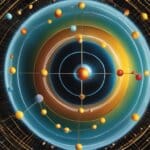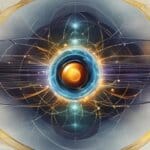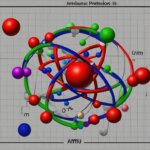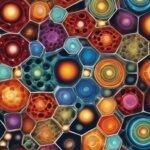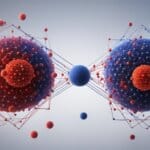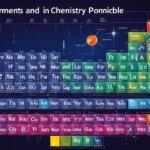Table of Contents
An atom is a fundamental particle of matter that uniquely defines a chemical element. It is the basic building block of everything that takes up space and has mass.
An atom consists of a central nucleus surrounded by one or more negatively charged electrons. The nucleus contains protons and neutrons, which are relatively heavy particles.
Protons are positively charged, while neutrons are electrically neutral. The number of protons in the nucleus determines the atomic number of the element, which defines its identity.
Electrons orbit the nucleus in shells and have a tiny mass compared to protons and neutrons. The total mass of an atom, including protons, neutrons, and electrons, is known as the atomic mass or atomic weight.
The Structure of an Atom
Atoms, the fundamental building blocks of matter, have a unique structure that consists of a central nucleus surrounded by orbiting electrons. Let’s explore the different components that make up the structure of an atom.
The nucleus, located at the center of the atom, is composed of protons and neutrons. Protons carry a positive charge, while neutrons have no charge. The number of protons in the nucleus determines the atomic number, which is unique to each element.
The electrons, with their tiny mass, orbit around the nucleus in specific energy levels or shells. These negatively charged particles balance the positive charge of the protons, creating a stable atom.
The mass of an atom is determined by the combined mass of its protons and neutrons. This total mass is called the atomic mass or atomic weight. The atomic mass is approximately equal to the sum of the protons and neutrons in the nucleus, as the mass of electrons is negligible in comparison.
Comparison of Protons, Neutrons, and Electrons
| Component | Charge | Mass (Relative to Proton) |
|---|---|---|
| Proton | Positive (+) | 1 |
| Neutron | Neutral (No charge) | 1 |
| Electron | Negative (-) | ~0.00055 |
This structure of an atom, with its positively charged nucleus and orbiting electrons, allows for the formation of chemical bonds and the organization of elements in the periodic table based on their atomic number. Understanding the structure of atoms is crucial to comprehend the behavior of elements and compounds.
Atomic Number and Atomic Mass
In the world of atoms, understanding their atomic number and atomic mass is crucial. These properties play a significant role in determining the identity and characteristics of an element.
Atomic Number:
The atomic number of an atom is a fundamental property that defines its identity. It represents the number of protons present in the nucleus of the atom. Whether it’s hydrogen, helium, or any other element on the periodic table, their atomic numbers set them apart.
“The atomic number is the unique identifier of an element, distinguishing it from all others.”
For example, let’s consider hydrogen. With an atomic number of 1, hydrogen has one proton in its nucleus. In contrast, helium, with an atomic number of 2, contains two protons.
Atomic Mass:
The atomic mass of an atom is the sum of the number of protons and neutrons in its nucleus. Protons carry a positive charge, while neutrons are electrically neutral. Together, these particles contribute to the mass of the atom.
“Atomic mass represents the total weight of an atom, accounting for protons and neutrons.”
For example, carbon, with an atomic number of 6, typically has six protons and six neutrons. Hence, the atomic mass of carbon is approximately 12 atomic mass units (AMU).
Isotopes:
Isotopes are atoms of the same element with different numbers of neutrons. As a result, isotopes may have slightly different atomic masses.
“Isotopes give us a glimpse into the variations within an element while maintaining its essential characteristics.”
Here is an example: carbon-12 and carbon-14 are two isotopes of carbon. Carbon-12 has six protons and six neutrons, resulting in an atomic mass of 12 AMU. Carbon-14, on the other hand, has six protons and eight neutrons, giving it an atomic mass of 14 AMU.
It’s important to note that while isotopes have different atomic masses, they do not undergo significant changes in their chemical properties due to variations in the number of neutrons.
In summary, the atomic number defines the identity of an element, while the atomic mass represents the total weight of an atom. Isotopes, with their varying numbers of neutrons, contribute to the intriguing nuances within elements.
| Element | Atomic Number | Atomic Mass |
|---|---|---|
| Hydrogen | 1 | 1.00784 AMU |
| Helium | 2 | 4.00260 AMU |
| Carbon | 6 | 12.01074 AMU |
List of Isotopes:
- Hydrogen-1 (1 proton, 0 neutrons)
- Hydrogen-2 (1 proton, 1 neutron)
- Hydrogen-3 (1 proton, 2 neutrons)
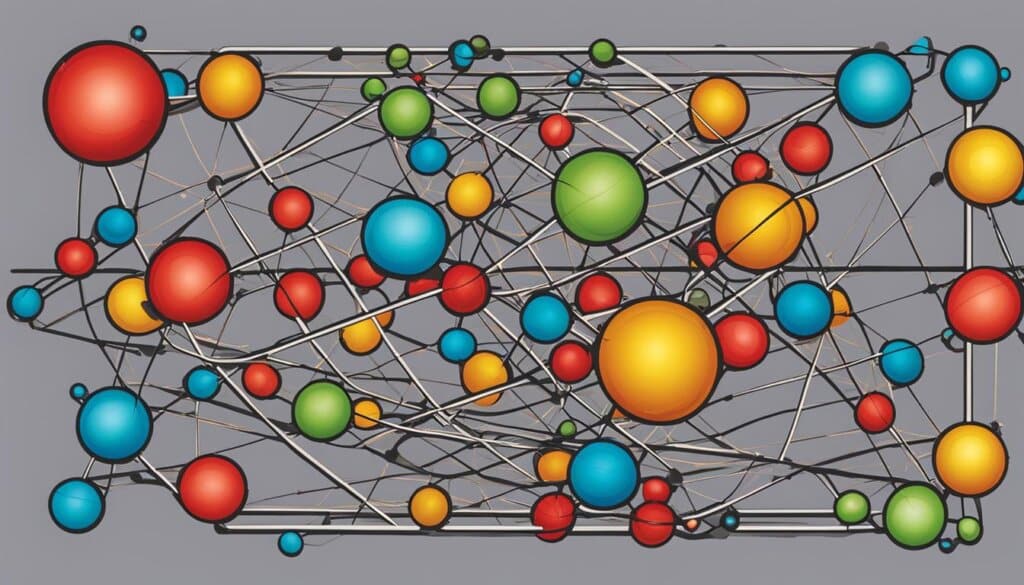
Elements and Compounds
An essential concept in chemistry is the distinction between elements and compounds. Elements are pure substances composed of a single type of atom. They cannot be broken down into simpler substances through chemical reactions. Each element is defined by its unique set of atomic properties, including the number of protons and electrons it possesses. These atomic properties are responsible for determining the chemical properties of each element.
In contrast, compounds are substances that consist of two or more different elements chemically bonded together. They can be broken down into their constituent elements through chemical reactions. The properties of compounds are distinct from those of their constituent elements due to the rearrangement and formation of chemical bonds during their creation.
To effectively understand and categorize elements, scientists have developed the periodic table. This table organizes elements based on their atomic number, which reflects the number of protons in an atom’s nucleus. The atomic number also determines the element’s identity and its position in the periodic table. By organizing elements in this manner, it becomes easier to study and predict their chemical properties, as elements with similar atomic structures often exhibit similar chemical behaviors.
In summary, elements are the fundamental building blocks of matter, consisting of a single type of atom. Compounds, on the other hand, are combinations of two or more elements that have undergone chemical bonding. Understanding the atomic properties of elements is crucial for comprehending their chemical properties, while the periodic table provides a systematic framework for organizing and studying these elements.
FAQ
What is an atom?
An atom is a particle of matter that uniquely defines a chemical element.
How is an atom structured?
An atom consists of a central nucleus surrounded by one or more negatively charged electrons. The nucleus contains protons and neutrons.
What are protons and neutrons?
Protons are positively charged particles found in the nucleus, while neutrons are electrically neutral particles. Both protons and neutrons contribute to the mass of the atom.
Where are electrons located in an atom?
Electrons orbit the nucleus of an atom in shells.
What is the atomic mass of an atom?
The atomic mass or atomic weight of an atom is the total mass, including protons, neutrons, and electrons.
What is the atomic number of an atom?
The atomic number of an atom is equal to the number of protons in its nucleus and determines the identity of the element.
What are isotopes?
Isotopes are atoms of the same element with different numbers of neutrons, resulting in different atomic masses.
What are elements?
Elements are pure substances made up of one type of atom and cannot be broken down further.
What are compounds?
Compounds are substances made up of two or more different elements chemically combined.
How are elements organized?
Elements are organized in the periodic table based on their atomic number, which reflects their properties.



